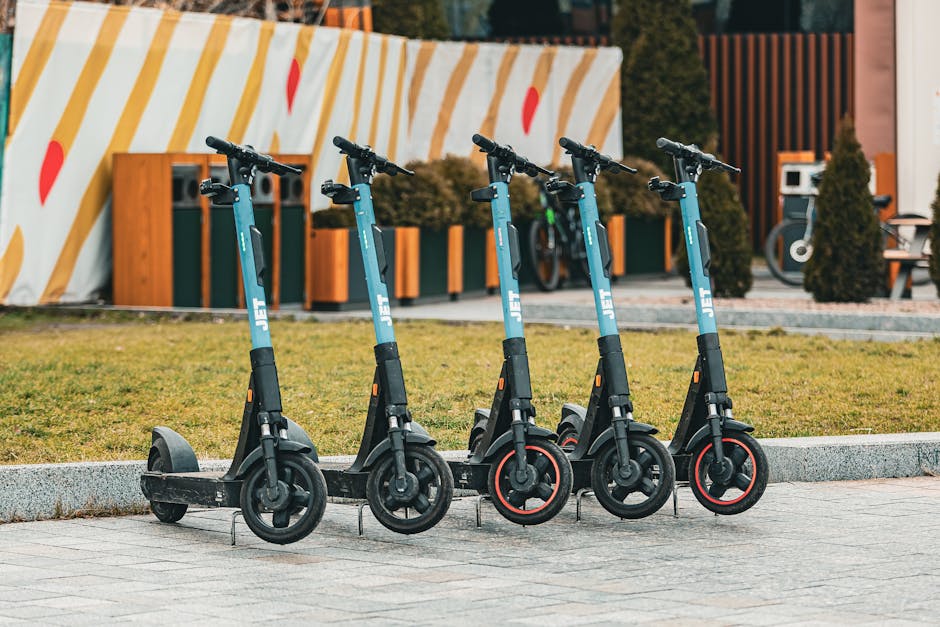Exploring Micro-Mobility Solutions: Revolutionizing Urban Transportation
Urban transportation has long been a challenge in bustling cities around the world. Traffic congestion, pollution, and limited parking spaces have led to a growing demand for innovative solutions that can make commuting more efficient, cost-effective, and environmentally friendly. In recent years, the concept of micro-mobility has emerged as a promising alternative, offering compact, convenient, and sustainable modes of transportation for short-distance trips. From electric scooters to bike-sharing programs, micro-mobility solutions are reshaping the way people move around urban areas.
The Rise of Micro-Mobility
Micro-mobility refers to the use of lightweight, shared transportation modes for short trips within urban areas. This trend has gained momentum in recent years, driven by advances in technology, changing consumer preferences, and a growing awareness of the environmental impact of traditional transportation methods. Electric scooters, in particular, have become a popular choice for many city dwellers looking for a convenient and eco-friendly way to travel short distances.

By Biekir via Pexels
One of the key drivers of the rise of micro-mobility is the proliferation of smartphone apps that allow users to easily locate, unlock, and rent shared vehicles. Companies like Lime, Bird, and Spin have capitalized on this trend by deploying fleets of electric scooters and bikes in cities across the globe. These dockless systems enable users to pick up and drop off vehicles at their convenience, making them a flexible and practical option for short trips.
Benefits of Micro-Mobility Solutions
There are several advantages to using micro-mobility solutions for urban transportation. One of the most significant benefits is their environmental impact. Electric scooters and bikes produce zero emissions, helping to reduce air pollution and combat climate change. By encouraging more people to choose sustainable modes of transportation, micro-mobility solutions can contribute to creating cleaner and healthier cities.

By Christina Morillo via Pexels
In addition to their environmental benefits, micro-mobility solutions offer a cost-effective alternative to traditional forms of transportation. With pay-as-you-go pricing models and affordable rental fees, these services are often more affordable than owning a car or taking a taxi. This accessibility makes micro-mobility an attractive option for a wide range of city residents, including students, commuters, and tourists.
Challenges and Controversies
Despite their many benefits, micro-mobility solutions are not without their challenges. One of the biggest issues facing these services is the issue of safety. Electric scooters, in particular, have been associated with a high number of accidents and injuries, leading to calls for stricter regulations and enforcement measures. Some cities have even banned electric scooters altogether in response to safety concerns.

By Chokniti Khongchum via Pexels
Another challenge facing micro-mobility solutions is the issue of infrastructure. Many cities lack the necessary bike lanes and designated parking areas for shared vehicles, leading to cluttered sidewalks and complaints from pedestrians. Improving infrastructure to accommodate micro-mobility services will be crucial in ensuring their long-term success and sustainability.
Future Trends in Micro-Mobility
Despite these challenges, the future looks bright for micro-mobility solutions. As technology continues to advance, we can expect to see even more innovative and efficient modes of transportation being developed. From self-driving electric scooters to flying taxis, the possibilities are endless when it comes to revolutionizing urban mobility.

By Mike Bird via Pexels
Moreover, with the rise of the sharing economy and the growing popularity of sustainable transportation options, micro-mobility is likely to become an integral part of the urban transportation landscape. As more cities invest in infrastructure and regulatory frameworks to support these services, we can expect to see a shift towards a more sustainable and efficient urban transportation system.
Expert Opinions
We reached out to Dr. Sarah Johnson, a transportation expert at the University of Urban Studies, for her thoughts on the future of micro-mobility solutions. According to Dr. Johnson, “Micro-mobility has the potential to transform urban transportation by providing a convenient and sustainable alternative to traditional modes of travel. As cities continue to grow and face increasing pressure on their transportation networks, micro-mobility can play a key role in reducing congestion, improving air quality, and enhancing the overall quality of life for residents.”
Conclusion
To wrap things up, micro-mobility solutions are revolutionizing urban transportation by offering compact, convenient, and sustainable modes of travel for short distances. With the rise of electric scooters, bike-sharing programs, and other innovative services, cities around the world are embracing micro-mobility as a key component of their transportation networks. While there are challenges to overcome, including safety concerns and infrastructure issues, the future looks bright for micro-mobility as technology continues to advance and more people embrace sustainable modes of transportation. By investing in micro-mobility solutions and supporting their growth, cities can create cleaner, greener, and more livable urban environments for all residents.




